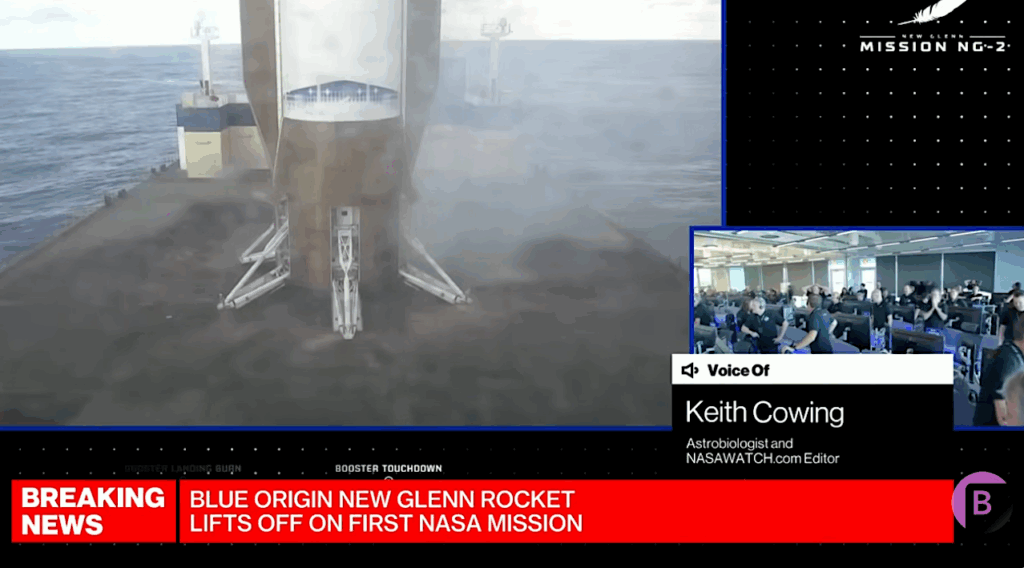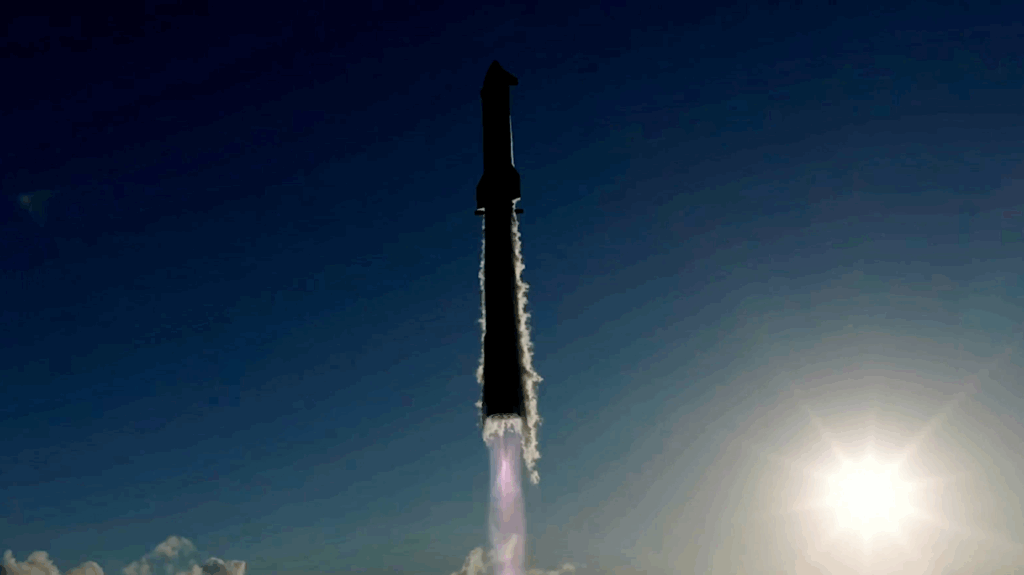Is NASA Going To Let SpaceX and Boeing Launch?

SpaceX, Boeing design risks threaten new delays for U.S. space program, Reuters
“Two people with direct knowledge of the program told Reuters that the space agency’s concerns go beyond the four items listed, and include a risk ledger that as of early February contained 30 to 35 lingering technical concerns each for SpaceX and Boeing. Reuters could not verify what all of the nearly three dozen items are. But the sources familiar with the matter said the companies must address “most” of those concerns before flying astronauts and, eventually, tourists to space.”









I hope they at least let SpaceX launch soon, they need that pad for the scheduled launch of the upgraded Falcon Heavy using the Block 5 F9Rs. Really, if they were doing Apollo using these standars they would have never launched… Is it any wonder why Elon Musk has moved on to building the Starship/Super Heavy.
BTW Congratulations to SpaceX for doing something NASA hasn’t done since the Apollo era, send a payload to the Moon’s surface. Another great flight for the F9R Block 5. SpaceX is showing the world how rockets are launched, and then launched again.
https://www.teslarati.com/s…
I hope that this NASA review committee was taking notes.
Admittedly, I tend to go negative when assessing NASA’s HSF, assuming that bureaucratic predilections tend to over-state the impact of the smallest issue.
But is this actually true? I have no way of knowing, other than following the comments of those who actually DO know; Keith’s site, and others, are invaluable to interested civilians like me, offering a glimpse of the “inside”.
I conclude that comparing “standards” in place for Apollo, and those in place for SX/ Boeing missions, appears to be impossible, largely because a comprehensive list and discussion of current stumbling blocks doesn’t appear to be public.
I can’t speak for Apollo (before my time), or what NASA currently expects of SpaceX (I’m not behind those doors.) But I can make a comparison between similar, scientific instruments on robotic missions. Between Cassini and Juno, I’d say the cost and person-years required to design and build comparable scientific instruments at least doubled. That’s all due to more stringent requirements on parts, materials, documenting same, documenting requirements and design decisions, trade studies to prove a decision is optimal rather than adequate, studying potential risks and failure modes (at a levels that would previously have been accepted without much discussion), reviews of all that, etc. In addition, Earth-orbiting, robotic missions are typically developed to standards similar to the older planetary missions. Compared to modern planetary missions, that adds up to a factor of two or three in cost.
That’s for about fifteen years of evolution in NASA’s processes and requirements. Based on things like the Rogers and CAIB reports, and various histories of the Apollo program (including official, NASA ones), I think something similar is true of human spaceflight. If so, NASA would not have gotten to the Moon within a decade under the current practices. Saying they would never have gotten their at all is probably an exaggeration. On the other hand, not getting their within Kennedy’s deadline might have undermined political support and ended the program before the first landing. That’s hard to say.
I love how people who are on the outside looking in, can continually criticize, when they have no real knowledge about what’s going on.
And I love how both the Challenger and Columbia accidents occurred because of a lack of transparency and group think among NASA managers. The first was even used as a case in an Organizational Behavioral textbook about the risks when there is a lack of transparency.
Also remember, there is no crew on this flight and the next flight for this capsule is an in-flight abort test. Neither put humans at risk and both will provide more data. So if NASA or the ASAP doesn’t like what they see they could easily require another flight.
I’ll disagree with this.
While some of what NASA does is a black box, what we can all see is the effect – endless stumbling on a succession of Roads to Nowhere. If their process for deciding what and when to fly with respect to humans was really that good, why have they never managed to get a single person beyond Earth orbit since 1972? Why did their orbiter design kill so many people and cost so much to run?
Don’t get me wrong, I love NASA – what they’ve accomplished, what they continue to accomplish, what I know they’ll accomplish in the future – all the brilliant and dedicated folks who invest themselves there and the amazing things they do. But the results show that their decision making process for deciding what and when to fly when it comes to humans is clearly broken.
You want to shake something up, Trump? Shake this. Trust the engineers at SpaceX and Boeing to get it right and #LetThemFly.
One word: politics. Go pester your elected officials, who have no real vision.
Kill so many people? 14 deaths over 30 years. All deaths are tragic, but ill take those odds, given how many die in traffic accidents and in military mishaps.
Read up on how the Orbiter was designed and youll learn about the military requirements that helped drive the design.
If a government agency operates with so little transparency that “outside looking in” is even meaningful, then they are inviting criticism. In the absence of that sort of transparency, the voters will and should automatically assume the worst. If they can’t say something because it’s a private company’s proprietary information, they can at least say that.
“BTW Congratulations to SpaceX for doing something NASA hasn’t done since the Apollo era, send a payload to the Moon’s surface.”
Er, NASA sent LCROSS to the Moon’s surface in 2009. Of course SpaceIL is hoping for a slightly softer landing…
True, they did impact the Moon with LCROSS, as they did with The Rangers, but it isn’t the same as a soft landing. But it also shows the difference in a science policy focus on finding life in space versus understanding how to commercialize and develop space.
NASA has had the better part of a decade to figure this out. They should have clearly and openly spelled out any objections to Boeing and Space X crew flights a long time ago.
Right now I am giving NASA the benefit of the doubt. If Space X fails to launch the Crew Demo I this March 2, 2019 because of ambiguous unnamed NASA “concerns” then NASA will rightfully lose a lot of credibility.
And also asked for a few more test flights if they are that worried. Look at how many Blue Origin are doing, at their own expense, before putting humans aboard the New Shepard. There is no substitute for actual flight data. And that is the entire purpose of this flight, to provide actual flight data.
Those key issues have already been resolved, beside that the article is all over the place on what the problems actually are.
But I have a feeling that if it wasn’t this something else would pop up that causes concern. It is becoming clear that NASA is being left in the dust by the private sector. Which is unfortunate.
Also Googling the author of the piece doesn’t exactly show a fair view of certain Aerospace companies.
And yet another “off nominal” Soyuz launch but we go right along launching Americans on it…
Too bad the advisory group doesn’t read anything about the Russian space program.
Exactly what is “common” in HSF launcher development? Wasn’t the shuttle the last human-rated launcher developed in the US? And even if Shuttle had no open points in their risk analysis at the time of first launch, we know now that they simply didn’t have a complete view of the risks.
Or NASA just ignored those who pointed out the risks…
Yet another outside looking in comment.
Based on a friend who was on the design team, an Apollo veteran, who argued until he was blue in the face those tiles would kill someone and they needed a more robust heat shield. He was told he worried too much…
It wasn’t the tiles that got someone killed.
Writing a requirement for no foreign object impacts, at all, ever, and expecting that to actually happen was delusional. The tiles and their fragility were as much to blame for the Columbia disaster as the foam.
You’ve taken that position several times, and each time, I think to myself “You know, that guy is right.”
It would be very helpful, however, if the “inside” were somewhat more visible to those of us on the “outside.”
Yes, especially as those of us on the outside are paying the bills. It’s the type of attitude you would expect from a Monarchy or dictatorship rather than an agency part of a Democratic government. Maybe that is why NASA is so much more comfortable working with the Russian Soyuz than with entrepreneurs like SpaceX who question the status quo of how things are done.
The space shuttle would never meet today’s NASA safety standards. The goal is to do better, so they set the standards higher.
Heck, even when it was flying the space shuttle always flew with waivers for various issues that were not addressed (some simply could not be addressed). At some point, you just have to fly the thing even with the known issues.
Exactly what risks have been identified in the designs of the “enormous” parachutes, and at what point do they deploy supersonically during reentry? Space Shuttle SRB’s were recovered using parachutes, and IIRC were the largest, heaviest payloads thus recovered. I don’t know how the SpaceX chutes are used, but I would be surprised if the data from the SRB’s wouldn’t have been useful. Be nice if the author and possibly NASA was more specific about their concerns.
This is an issue that’s been talked about forever online (even since the Usenet News days on the sci.space newsgroups). NASA got to write its own waivers for its own vehicles for decades (Mercury through the space shuttle). The huge laundry list of issues addressed after both the Challenger and Columbia disasters show that NASA was a lot more cavalier with its own vehicles, IMHO.
For Soyuz, they have no control over what the Russians do, so we shrug our shoulders and just fly. This is despite the quite checkered safety record of both the Soyuz launch vehicle and the Soyuz capsule (which includes both fatalities and lots of “close calls”).
But for commercial crew, they would need to write waivers for vehicles they don’t own, but really want to have as much control as possible over them. This is uncharted territory for NASA.
Yes, I think you have hit the nail on the head.
Indeed. When Soyuz has a failure I’m always amazed at how quickly they come back on line and wonder how long it would take if it was NASA hardware.
Russia has a culture that addresses issues quickly and they start flying as soon as possible. Unfortunately, Russia also has quality control problems that have gotten quite bad over the last 5 to 10 years.
Similarly SpaceX.
I was just thinking today how the CC mess confirms all the worst fears of the sci.space days.
HSF culture aside, it’s important not to lose sight of the fact that if there’s an accident, NASA will be blamed for poor oversight of its contractor because it’s a NASA program. If there’s a success, Boeing and SpaceX will get all of the credit. So that’s why NASA’s being so careful as they mainly have little to gain and almost everything to lose. If/when Boeing/SpaceX get their own truly commercial crew customers, then they can make all of the calls regarding safety as it’s their reputation and business that will be on the line.
No, actually it will be the FAA CST making the calls since they will be issuing the licenses for those flights. And then there is the insurance industry since they will need it to get their launch license. So neither will be calling the shots in terms of safety. Why do think Blue Origin is doing so many test flights?
To clarify my comment, I was referring only to NASA crewed flights. That’s all NASA cares about. If one of them fails, Congress will get involved and the entire program will go on hold pending investigations, etc. The Congress and the public demand success and safety. That’s what’s on NASA’s mind.
What Boeing and SpaceX do for non-NASA crewed flights is up to them, their other paying customers and FAA CST. Their track record and the commercial marketplace will determine their success, as it should. These comments here seem to confuse the two situations that to me appear to be quite different.
Commercial outfits tend not to like to have failures, especially where human lives are concerned. It’s bad for business!
not precisely true – take the example of guided climbs of Mt. Everest. It’s a risky process, people pay a bunch o’bucks, some don’t make it, and yet, the guide companies stay in business. More mundane, there are things like scuba tech diving, sky diving, jumping horses, extreme mountain biking, and other examples from adventure sports in general – the possibility of death is part of what makes it adventure, after all.
Often the participants and their families are unaware of the risk. Riding a motorcycle on public roads carries a risk of death 26 times as high as driving the same distance in a car, even higher without a helmet. The grieving family never seems to know this.
ThomasLMatula is right, NASA won’t have anything to do with certifying non-NASA crewed flights. And from what I can tell, FAA CST will just check to make sure that range safety is taken care of and that the paying passengers all know the risks. They’re not going to be “certifying” vehicles in the way that NASA is trying to do.
NASA is levying a lot more requirements on the commercial crew providers than FAA CST ever would.
Regarding “Congratulations to SpaceX for doing something NASA hasn’t done since the Apollo era, send a payload to the Moon’s surface.” – The NASA LCROSS mission was launched by ULA on an Atlas V in June 2009. And, on the SpaceX lunar mission, they were only the paid ride. LCROSS was a full mission.
Now to the meat of my comment: Do not go down the road of NASA conspiracy against SpaceX (or Boeing) too far. The certification requirement negotiations for commercial crew began in 2010 with CCDev. That as followed by CCDev2, CCiCAP, and CPC. CPC was specifically to develop the Certification Documents. These documents were negotiated and implemented in the CCtCAP in October 2014.
Both contractors signed up to their on specific certification plan. I have not heard of any significant/credible claims of NASA imposing new requirements in this area.
NASA cannot announce/publicize issues, waivers, exceptions to the certification process because such things are contract proprietary. The contractors did not want the public to have visibility into their problems.
So, expect future delay announcements to have only generic explanations. NASA cannot do otherwise. If you want to know the reasons, go to the contractor.
The statement specified “lunar surface.” But LCROSS was a lunar orbiter.
It *did* fire its Centaur stage to the lunar surface, but its landing was what we might characterize as “high speed lithobreaking.”
I’d honestly call LCROSS a two-spacecraft mission. The orbiter and the impactor (which was also the upper stage.) I’d also call it an active spectroscopy experiment, since the goal of the impact was to vaporize surface material. Slowing down rapidly was just a side-effect.
Saying “address” is deliberately vague. It can mean as little as pointing out text in documents someone has provided. (As in, “Do you have a backup system for X?” and “Yes, see page 39, paragraph 3 of the such-and-such document”) It could also mean a complete redesign of a major system, but that’s rare. The various reviews are trying to point out things that need to be dealt with before flight, but which the reviewers aren’t sure have been dealt with. Most of the action items are more about clarification and documenting the design than about any real changes, and using a vague word like “address” gives everyone flexibility in how to close the action item.
By the way, it depends on the mission, but rare for robotic missions to fly with known and unaddressed risks of failure. Sometimes the risk is addressed by accepting it, but that has to come with a solid justification. (E.g. the THEMIS spacecraft, a constellation of five identical, magnetospheric spacecraft, could fly with known risks of one spacecraft failing because they showed that the baseline goals could be accomplished with four spacecraft. The spacecraft did not have redundancy at the system level, but the constellation of five spacecraft did.)
Having trained in industrial engineering more than 40 years ago I have always been frustrated by the divergence between the NASA strategy for achieving safety in human spaceflight and that of modern industry.
In general industry you cannot determine the reliability of a system simply by analyzing a design on paper. The components and ultimately the entire system must be tested sufficiently to prove that it is reliable. Launch vehicle failures in particular are almost never random and often result from unanticipated failure modes. The solution is virtually always to correct the design, virtually never to add redundancy. With over 50 fights each, the failure modes in the Atlas and Falcon have been pretty much identified and corrected.
For spacecraft systems that must operate for years, some failures are stochastic and redundancy may be a reasonable strategy, i.e. for mechanical cryocoolers and gyros, but even here without actual testing there is no way to know how much redundancy is needed.
For NASA the moon race didn’t allow time for adequate testing so the magic of systems engineering was developed. The entire system was modeled on paper, reliability was WAGged and the magic word “failure tolerance” required as a blanket countermeasure.The fly in the ointment is that it is impossible to assure tolerance of an unanticipated failure mode.
“the moon race didn’t allow time for adequate testing”
I have wondered if this simple fact has become so inculcated at NASA that it is reasonable explanation for the (sometimes) stunning attention to minutia as well as persistent project delays?